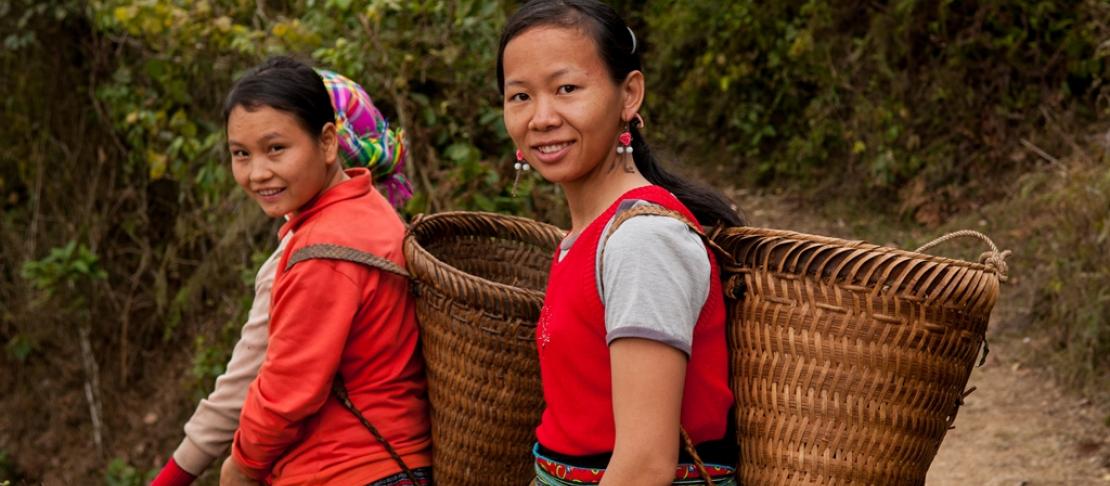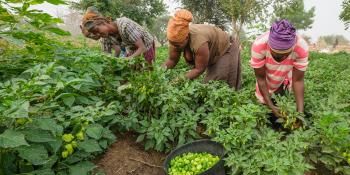The ‘CSA basket’ for farmers in Vietnam

Climate-smart agriculture fair allows farmers to familiarise themselves with potential interventions and determine suitability for their village.
“A research team gathered in the Climate-Smart Village of Ma in northern Vietnam recently to discuss new climate-smart technology with farmers in such a way that they would not only meet farmers’ needs, but would also mitigate the impact of a number of climate risks facing the village people”, writes Bui le Vinh on the CIAT DAPA blog.
During a recent visit to Ma, a Climate-Smart Village in Vietnam, a team of researchers presented various climate-smart agriculture (CSA) technologies that were unknown to the farmers but that had been deemed successful in areas with similar conditions. A list was derived to then be tested for suitability in Ma and the new technologies included:
- Cassava-based integrated crop systems,
- Cassava and tree plantations,
- Fish farming,
- Integrated landscape,
- Climate-smart systems in paddy fields,
- Cassava-grass forage strips,
- Cut-and-carry forage systems,
- Rice conversion to vegetables plots,
- Macadamia-fruit tree-forages intercropping, and
- Tea-coffee-fruit tree and forage integrated cropping systems.
These were presented at a CSA fair to give the farmers an opportunity to familiarise themselves with the interventions and determine their suitability in their village. The farmers highlighted that 4 of the 9 practices (2, 3, 6 and 7) would be particularly useful for them.
During the workshop, the farmers discussed how practical and feasible each technology would be, based on labour, money, time, knowledge, technical support and gender balance required. They also discussed the environmental and adaptation benefits of each intervention, as well as the social and economic aspects they believed they would bring.
The results from this exercise, based on a scorecard method, indicated that farmers were more positive about the first 7 in the list than the final 3. Generally, they believed that interventions requiring too many crops and trees would be complicated and resource intensive, preferring instead those that would yield higher income, such as fish farming, livestock and cassava. Interestingly, the farmers expressed an interest in a landscape approach which required them all to work together in a more systematic way.
This workshop showed how CSA in Ma can be seen as a ‘basket’ of 7 interventions which will be further analysed to narrow down to 3-5 for field trials.
To read more about this work, read the blog post Developing climate-smart options for farmers in Vietnam on CIAT's DAPA website.



